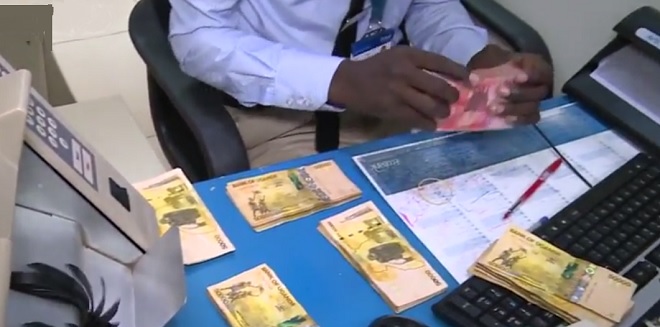
The first week of October has not been smooth sailing for the Uganda shilling. By close of the trading week that ended Oct. 07, the local currency had run down from Shs 3,385/3,395 on Sept.30 to Shs 3,405/3,415 to the US dollar, representing a loss of Shs 20.
This is the first major noticeable rapid decline in a period of over two months. In August and September, the local currency had held firm ground oscillating between Shs 3,375/3,380 and Shs 3,380/3,395.
Its woes however started on Sept.23 when it weakened as pressure from interbank and corporate activity gained momentum and market players were seen building positions ahead of end of month. The Central bank had to be active in open market operations, mopping up excess liquidity and thus enabling the shilling to stabilise at Shs 3,380/3,390.
Fred Muhumuza, an economist at the Makerere University College of Business and Management Sciences, described the situation as not “not healthy“ and attributed it to a number of factors. He cited the issue of government making some purchases or investors whose cycle ends on September 30, and thus repatriating profits, or the business community getting set to import heavily ahead of the festive season, though he quickly added that this is not a big threat to crowd out the market. “On the other hand, there could be some speculation given the suspension of World Bank loans [to Uganda],” he added.
Stephen Kaboyo, the managing partner at the Alpha Capital Partners, an investment advisory firm, said the three-month low could be a result of demand surging mainly from the energy and manufacturing sectors and the interbank.
“The Shilling breached a key resistance level of Shs 3,400 to the dollar and traded in the range of Shs 3,405/3,415. In the government securities market, BoU offered Shs 160 billion in two, and 15 year bonds. The market was oversubscribed with yields dropping across all the tenors,” he said.
“The outlook for the Shilling indicates sustained depreciation pressure as demand side market activity remains high amid low foreign currency inflows. Panic buying is likely to set in, as the currency tests new resistance levels.”
Bank of Uganda’s Director of Communications Christine Alupo admitted in an e-mail that there was indeed a pick-up in corporate demand for the dollar at the beginning of October especially from the oil sector, which means that the prevailing exchange rate is reflective of demand and supply but that the situation was stable. “The market has not exhibited significant distortion as may be reflected by excessive volatility. There is no spike in noise compared to justifiable pricing signals in the market. As such, the situation has not warranted Central bank intervention.”
She added that BoU’s policy is to have a stable, market-determined exchange rate. Intervention through the buying or selling of foreign currency is only necessary to smoothen excessive volatility i.e. excessively large short-term movements in the exchange rate that may be disjointed with economic fundamentals. “Nevertheless, BoU monitors the foreign exchange market on a continuous basis and stands ready to restore market stability during periods of distortionary and excessive volatility,” she added.
The knock on the Shilling came on the heels of the Oct. 06 announcement by the World Bank that it was cutting its 2016/2017 growth forecast for Uganda to 5.5% from 5.9%, citing the impact of South Sudan’s conflict on Uganda`s exports to the young nation and sluggish investments due to slower economic activity globally.
Exchange rate since August 2016
| Shilling to Dollar rate | Buying | Selling |
| Oct. 07 | 3,405 | 3,415 |
| Sept.07 | 3,375 | 3,385 |
| Aug. 07 | 3,365 | 3,375 |
UPDATE: As of October 17, rates were
| 3,459.96 | 3,469.96 |
****
editor@independent.co.ug
 The Independent Uganda: You get the Truth we Pay the Price
The Independent Uganda: You get the Truth we Pay the Price



